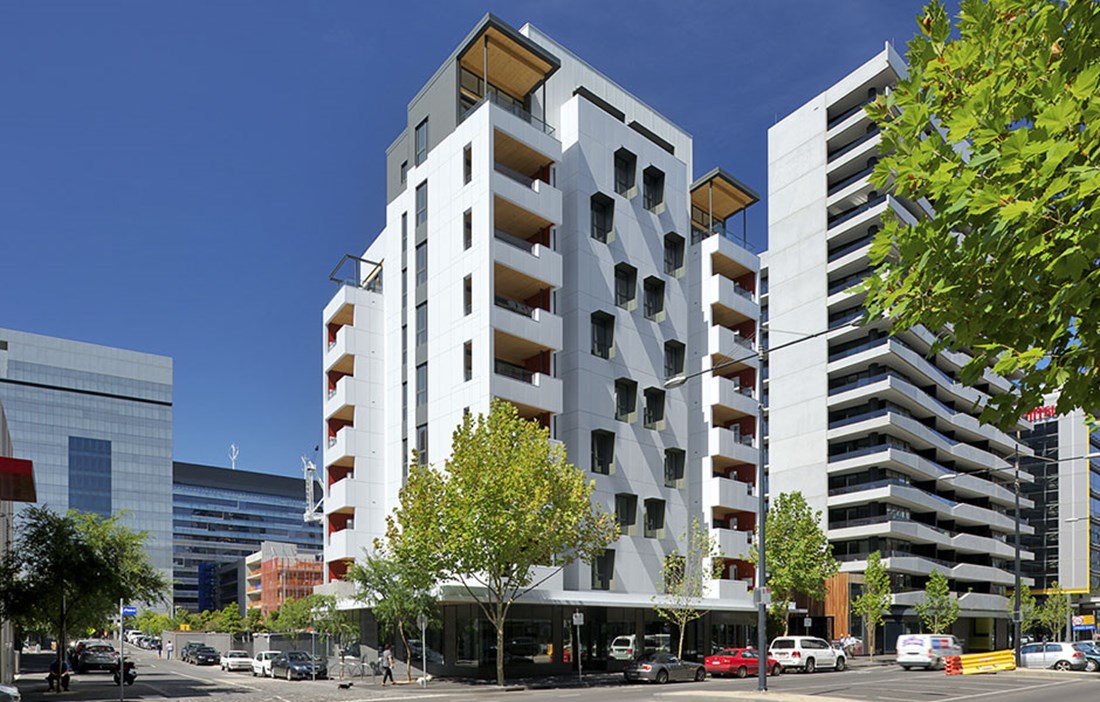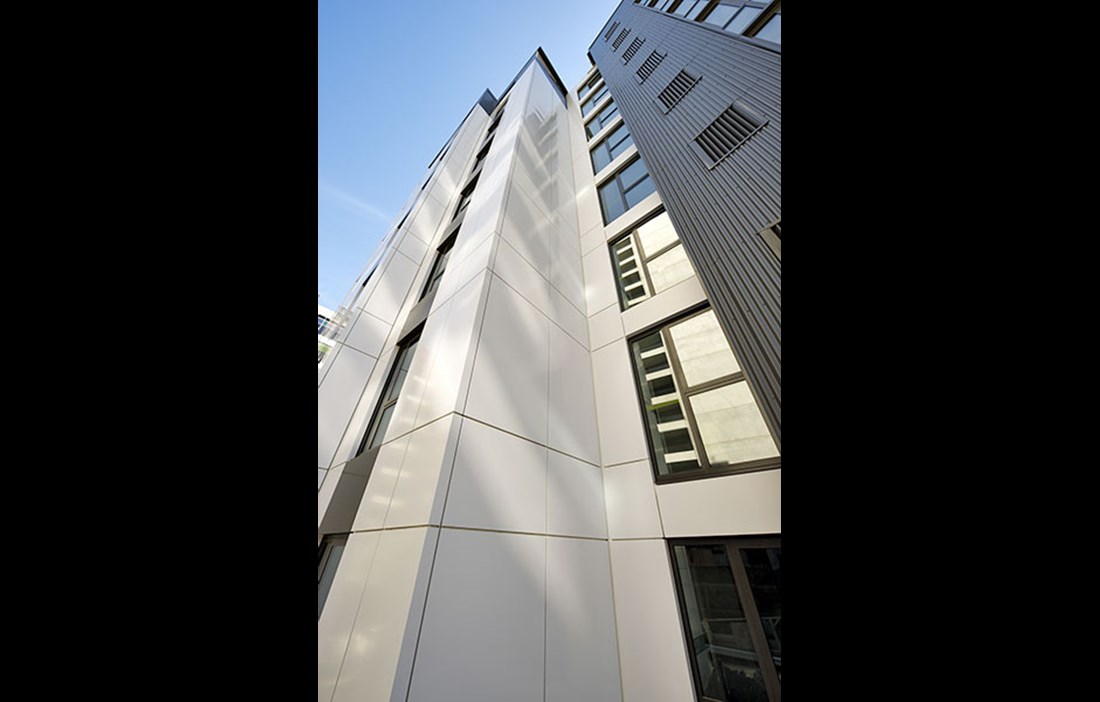THE WORLD’S TALLEST wooden apartment block was erected in Australia recently using cross laminated timber. It took just 11 months to build ten floors extending to a total height of over 32 metres.
Today, half of the world’s population lives in cities. By 2040, that figure is expected to rise to 75 percent. When the cities of the future are being built, there will therefore still be a need for large and tall buildings – but how can that be achieved sustainably?
A year ago, Canadian architect Michael Green gave a much-viewed TED Talk on his green vision for the future with cities made up of high-rises built in wood. Green’s argument acknowledges the role that steel and concrete have long played as a construction material, but suggests that – from a sustainability perspective – it is time to move on.
In Melbourne, Australia, they have done just that right. On Bourke Street, not far from the waters of Victoria Harbour, a ten-storey block rises over 32 metres. Nothing unusual in that. However, the building – called Forté, which means ‘strong’ – is the world’s tallest residential building made from wood. To deal with the weight and the vibrations that a high-rise is subjected to every day, Forté is constructed in a material much stronger than ordinary timber. After three years of studies and tests, developer Lend Lease, which is behind Forté, chose panels of cross laminated timber, or CLT. The European spruce panels were made in Austria.
“We chose this material for three main reasons: safety, sustainability and efficiency. The risks associated with traditional construction sites are reduced, primarily due to the fact that the high-risk activities usually involved in conventional construction are instead carried out in a controlled factory environment. This makes for a cleaner, safer workplace. The material is also more sustainable and has the potential to be a carbon negative construction material. Each tonne of engineered wood stores around 1.6 tonnes of carbon dioxide. And being able to work with large prefabricated panels means the construction time can be cut considerably,” explains Andrew Nieland, head of Timber Solutions at Lend Lease.
ERECTING THE WOODEN STRUCTURE took just 38 days, and required only six construction workers. The entire building was completed in 11 months. Forté’s ground level is the only thing made in concrete and houses various shops. As well as providing stability, the concrete foundation acts as a spacer between the wooden structure and the ground, which gives protection against termite attack. All nine floors above are made of wood – from the walls and ceilings to the lift shaft and stairs. In addition to cross laminated timber, the designers used Boral Silkwood, an engineered flooring manufactured from blackbutt wood, a kind of eucalyptus.
Although building in wood is relatively common in Australia, Forté was something new. Due to its pioneering nature, the project received a cautious reception from several of the external parties involved.
“We had to battle against a headwind just about all the way through process. But by always keeping in close contact with the authorities, banks, insurance companies and other stakeholders, it all worked out. The building was eventually approved on every level, and all the apartments were sold and the shops rented out.”
ANDREW NIELAND BELIEVES it is important not to see wood as simply a substitute for conventional materials, but something that changes and simplifies the entire construction process.
“The building’s designs are modelled in AutoCAD and then sent off to a manufacturer. This gives you complete control over a project from concept to completion. Logistics, delivery and installation are planned in advance, which results in fewer decisions, and thus fewer errors on site. And that creates less waste. Any material that is left over is recycled as biomass for heating and power generation.”
MANY OF THE SCEPTICS had questions about the building’s fire safety and how it would last against the elements. The answer is that the large wood panels are difficult to ignite, and if they do catch fire they burn slowly (around two centimetres gets charred in 30 minutes), and in a way that is highly predictable. The charring also creates a protective layer around the core of the wood. To protect the building’s facade against rain and general wear, Lend Lease developed a system of sheet metal screening that works with a vapour barrier to protect against damp.
Forté is part of a larger eco-project in the area around Victoria Harbour, which has the highest concentration of Green Star certified buildings in Australia. Lend Lease also built the nearby Docklands Library and Community Centre, a three-storey structure also constructed in wood.
Environmental consideration is a thread that runs throughout Forté’s 1,730 square metres. The building comprises 23 energy efficient apartments, whose balconies all have a small vegetable patch. The wood walls provide natural temperature regulation, as they have a cooling effect on hot summer days and retain heat in the apartments during winter. Rainwater is collected and used for flushing the toilets and for the sprinkler system. Inside, the building is lit by LED lamps, and most of the apartments make the best possible use of natural light.
“There is a desire in the real estate industry to move towards safer, more sustainable and more efficient ways of building. CLT could lead the way and make improvements in all areas, while at the same time delivering a high quality product for the end consumer. Forté offers well-planned, comfortable apartments that don’t cost a fortune to buy and live in. But the most unique thing is that we can give our buyers a product that’s not just for them, but also for the environment,” says Andrew Nieland.
Text Erik Bredhe























